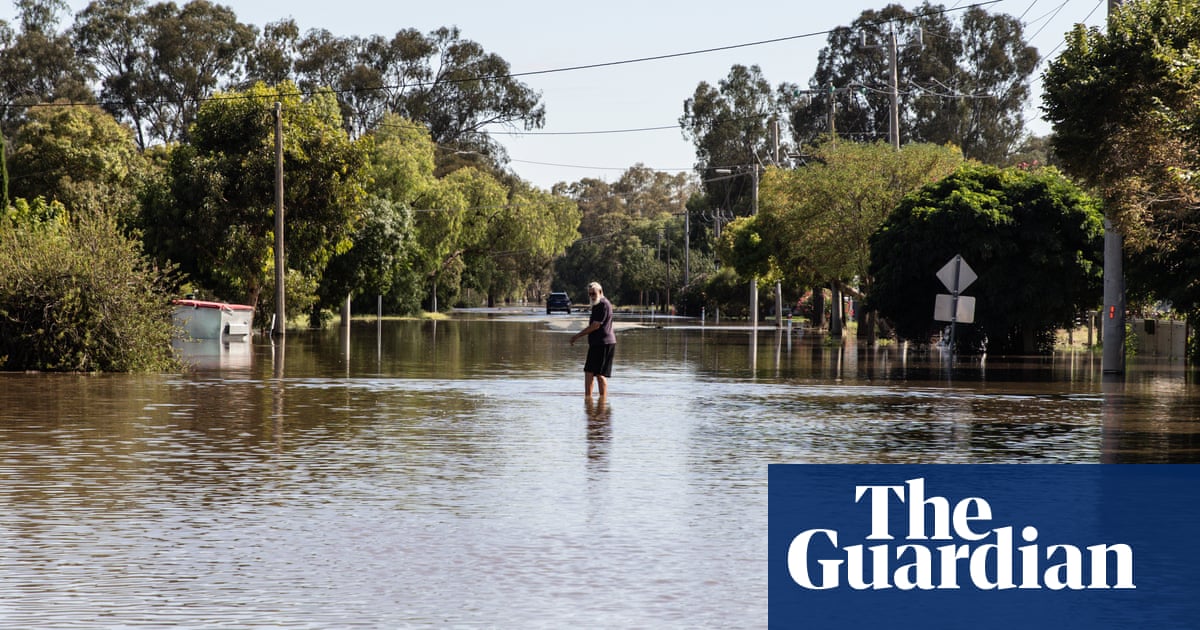Kerry Plowright, while relaxing and watching TV one evening late last year, received a sudden alert on his phone about an impending hailstorm. Stepping outside, he was taken aback by the deafening sound of hailstones pounding the roofs in Kingscliff, New South Wales. With swift action, he managed to shield his vehicles under protective canvas sails just in time to prevent any damage.
Plowright’s experience is just one example of the unpredictable weather events that have characterized Australia’s recent summer of extremes. Amidst concerns over the accuracy and timeliness of weather warnings, the Albanese government has initiated an investigation into the alerts issued by the Bureau of Meteorology and emergency services.
In a unique twist, Plowright’s advance notice of the hailstorm was facilitated by data provided by his own company, Early Warning Network. This innovative firm utilizes radar and remote sensor data analysis to detect and issue alerts for extreme heat, rainfall, and flooding, catering to a clientele that includes local councils and major insurers.
While conventional services often rely on data from established sources like the Bureau of Meteorology or the European Centre for Medium-Range Weather Forecasts (ECMWF), Early Warning Network is now exploring the integration of artificial intelligence models. These AI advancements aim to deliver a wealth of weather information rapidly and cost-effectively, without the need for high-performance computing resources.
The potential of artificial intelligence in revolutionizing weather preparedness is a sentiment shared by Juliette Murphy, the founder of FloodMapp. Drawing from her experiences monitoring floods in Queensland and Calgary, Murphy’s FloodMapp harnesses machine learning capabilities to enhance flood prediction accuracy. By complementing the efforts of the Bureau of Meteorology, FloodMapp aids authorities in making crucial decisions such as evacuation procedures and road closures, particularly vital in safeguarding against flood-related fatalities.
The Bureau of Meteorology acknowledges the value of integrating artificial intelligence into its operations, recognizing the benefits it brings to enhancing services for government agencies, emergency responders, and the general public. This proactive approach aligns with the broader industry trend towards leveraging AI technologies to augment existing forecasting capabilities.
Justin Freeman, a former member of the Bureau of Meteorology’s research team, underscores the transformative potential of geospatial models developed by his company, Flowershift. By leveraging observational data, Flowershift aims to supplement existing forecast products, offering enhanced predictive insights for remote regions and other underserved areas.
As the field of AI-driven weather forecasting continues to evolve, there is a growing emphasis on the practical applications of these models. From aiding farmers in decision-making processes to refining localized weather forecasts, the possibilities for AI integration in meteorology are vast and promising.
While AI holds immense promise in advancing weather prediction accuracy, some experts caution against overreliance on these models, especially in scenarios of extreme atmospheric conditions. The nuanced interplay between traditional numerical models and AI-based forecasting tools underscores the need for a balanced approach to leveraging technology in weather prediction.
Despite the inherent limitations and challenges associated with AI-driven weather modeling, the ongoing advancements in machine learning offer valuable insights and opportunities for enhancing forecasting precision. As the global climate continues to evolve, the integration of AI technologies in meteorology represents a significant step towards improving our understanding and preparedness for weather extremes.










